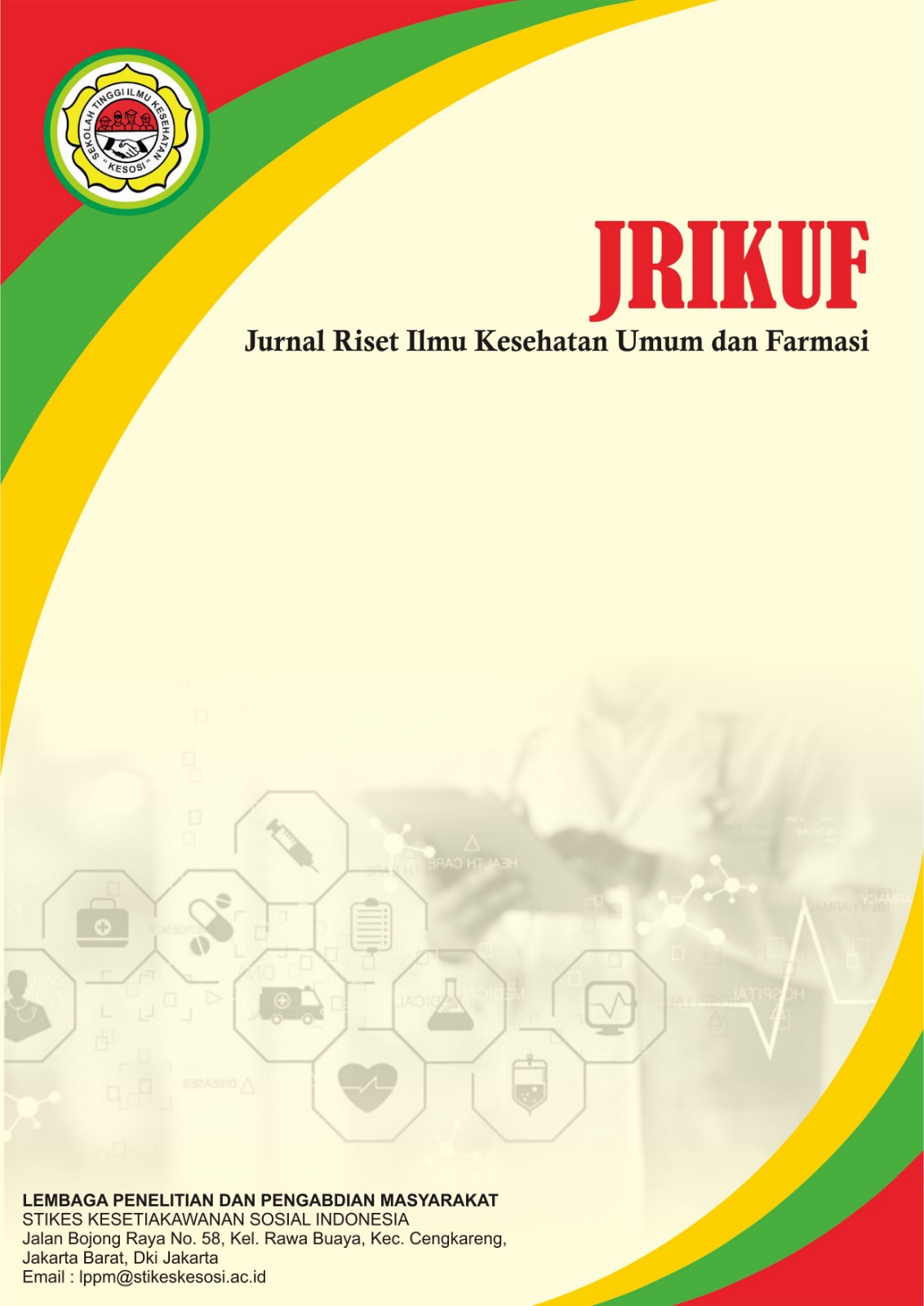Respon Antibiotik Salmonella typhi pada Anak dengan Demam Tifoid
DOI:
https://doi.org/10.57213/jrikuf.v3i3.774Keywords:
Antibiotic, Salmonella Typhi, Typhoid FeverAbstract
Typhoid fever is a significant health issue worldwide, especially in developing countries. The highest incidence of typhoid fever occurs in the pediatric population, particularly among school-age children. Patients often resort to self-medication with antibiotics, where chloramphenicol is the primary choice for treating typhoid fever in Indonesia. However, reports of resistance to the chloramphenicol group have been documented in some locations. A total of 8 articles are included in this literature, revealing the existence of resistant isolates in the antibiotic susceptibility test for Salmonella thypi during the primary therapy. Several cases demonstrate resistance to various antibiotics such as ceftriaxone, cefuroxime, amoxicillin, ampicillin, ciprofloxacin, augmentin, fluoroquinolones, azithromycin, and nalidixic acid. However, some drugs have proven effective, including Cefixime, ceftriaxone, chloramphenicol, ofloxacin, cefepime, quinolones, and third-generation cephalosporins, which are considered sensitive to S. Typhi.
References
Adabara, N. U., Ezugwu, B. U., Momojimoh, A., Madzu, A., Hashiimu, Z., & Damisa, D. (2012). The prevalence and antibiotic susceptibility pattern of Salmonella typhi among patients attending a military hospital in Minna, Nigeria. Advances in Preventive Medicine, 2012, 875419.
Badan Penelitian dan Pengembangan Kesehatan. (2008). Riset Kesehatan Dasar 2007. Jakarta: Kementerian Kesehatan RI.
Batosamma, N., Muthmainah, N., Rahmiati, Pratiwi, D. I. N., & Hayatie. (2023). Literature review: Pola kepekaan Salmonella typhi terhadap antibiotik pada pasien demam tifoid anak. Homeostasis, 6(2), 563–567.
Centers for Disease Control and Prevention. (2008). Morbidity and Mortality Weekly Report, 83(6), 49–60.
Chau, T. T., et al. (2007). Antimicrobial drug resistance of Salmonella enterica serovar Typhi in Asia and molecular mechanism of reduced susceptibility to the fluoroquinolones. Antimicrobial Agents and Chemotherapy, 51(12), 4315–4323.
Emary, K., Moore, C. E., Chanpheaktra, N., An, K. P., Chheng, K., Sona, S., Duy, P. T., Nga, T. V., Wuthiekanun, V., Amornchai, P., Kumar, V., Wijedoru, L., Stoesser, N. E., Carter, M. J., Baker, S., Day, N. P., & Parry, C. M. (2012). Enteric fever in Cambodian children is dominated by multidrug-resistant H58 Salmonella enterica serovar Typhi with intermediate susceptibility to ciprofloxacin. Transactions of the Royal Society of Tropical Medicine and Hygiene, 106(12), 718–724.
Iyer, R. N., Jangam, R. R., Jacinth, A., Venkatalakshmi, A., & Nahdi, F. B. (2017). Prevalence and trends in the antimicrobial susceptibility pattern of Salmonella enterica serovars Typhi and Paratyphi A among children in a pediatric tertiary care hospital in South India over a period of ten years: A retrospective study. European Journal of Clinical Microbiology & Infectious Diseases, 36(12), 2399–2404.
Khatun, H., Islam, S. B., Naila, N. N., Islam, S. A., Nahar, B., Alam, N. H., & Ahmed, T. (2018). Clinical profile, antibiotic susceptibility pattern of bacterial isolates and factors associated with complications in culture-proven typhoid patients admitted to an urban hospital in Bangladesh. Tropical Medicine & International Health, 23(4), 359–366.
Limpitikul, W., Henpraserttae, N., Saksawad, R., & Laoprasopwattana, K. (2014). Typhoid outbreak in Songkhla, Thailand 2009–2011: Clinical outcomes, susceptibility patterns, and reliability of serology tests. PLoS ONE, 9(11), e111768. https://doi.org/10.1371/journal.pone.0111768
Marchello, C. S., Carr, B., & Crump, J. A. (2020). A systematic review on antimicrobial resistance among Salmonella Typhi worldwide. The American Journal of Tropical Medicine and Hygiene, 103(6), 2518–2531.
Patel, S. R., Bharti, S., Pratap, C. B., & Nath, G. (2017). Drug resistance pattern in the recent isolates of Salmonella typhi with special reference to cephalosporins and azithromycin in the Gangetic Plain. Journal of Clinical and Diagnostic Research: JCDR, 11(6), DM01–DM03.
Sauteur, P. M., Stevens, M. J. A., Paioni, P., Wüthrich, D., Egli, A., Stephan, R., Berger, C., & Bloemberg, G. V. (2020). Siblings with typhoid fever: An investigation of intrafamilial transmission, clonality, and antibiotic susceptibility. Travel Medicine and Infectious Disease, 34, 101498.
World Health Organization. (2008). Bulletin of the World Health Organization, 86(5), 321–346.
Xu, B., Huang, Y., Gao, Y., Chen, Y., Li, H., Yang, J., & Wang, H. (2020). Outpatient antibiotic prescribing patterns and influencing factors in children in primary care institutions in Beijing, China, 2017–2019. BMC Pediatrics, 20(1), 436.
Yogita, S. P., Hendrayana, M. A., & Sukrama, I. D. M. (2018). Pola kepekaan bakteri Salmonella typhi terisolasi dari darah terhadap siprofloksasin dan seftriakson di RSUP Sanglah periode Januari 2015–Maret 2017. E-Jurnal Medika, 7(12), 1–6.
Downloads
Published
Issue
Section
License
Copyright (c) 2025 Jurnal Riset Ilmu Kesehatan Umum dan Farmasi (JRIKUF)

This work is licensed under a Creative Commons Attribution-ShareAlike 4.0 International License.






